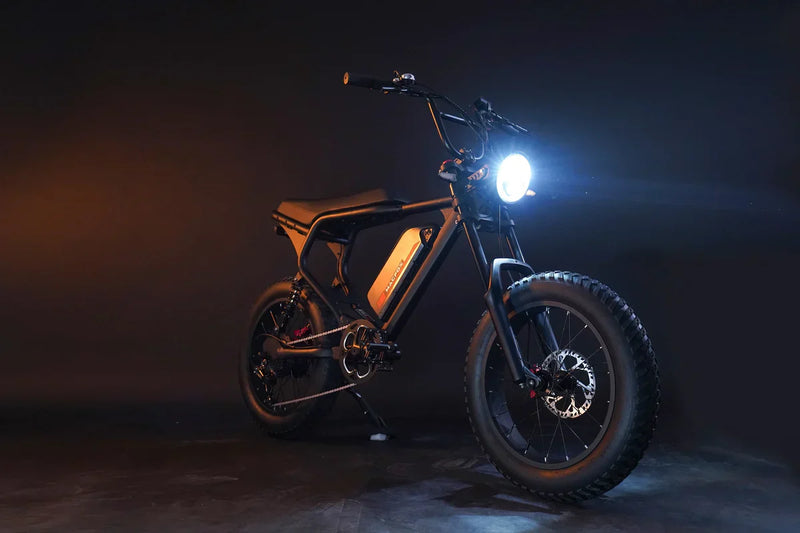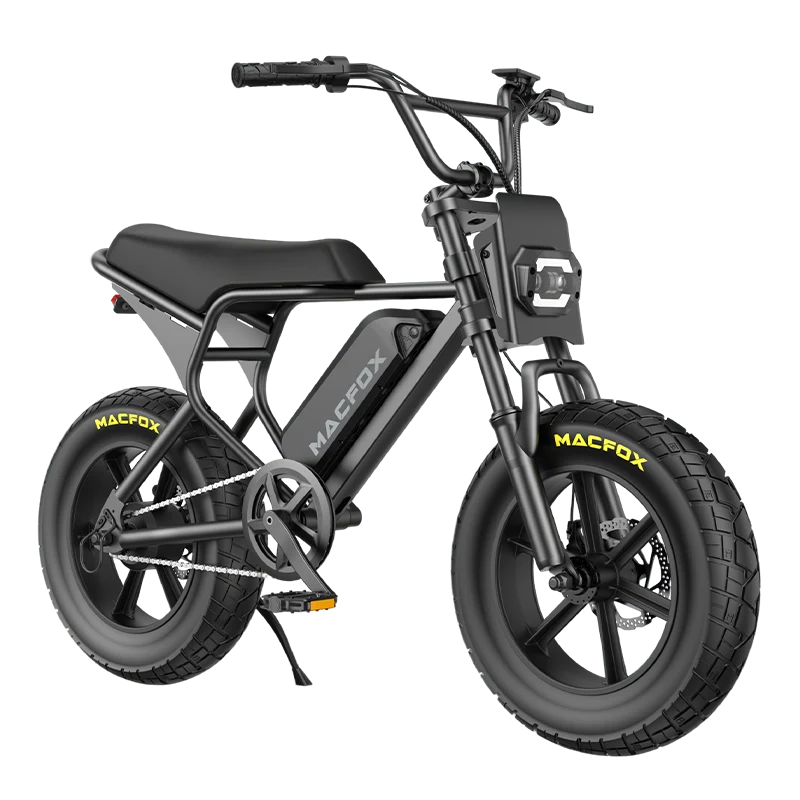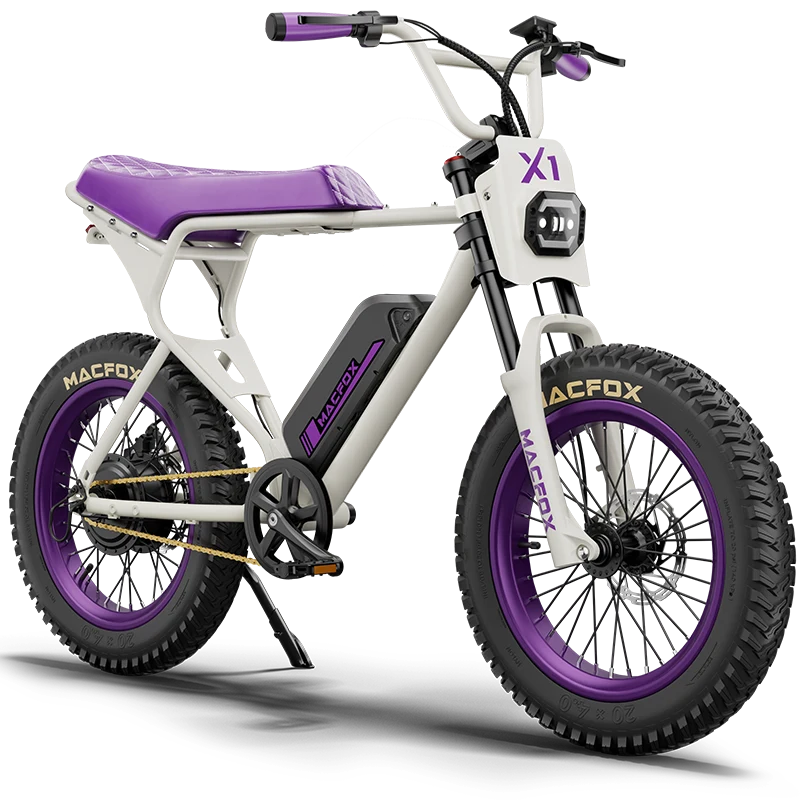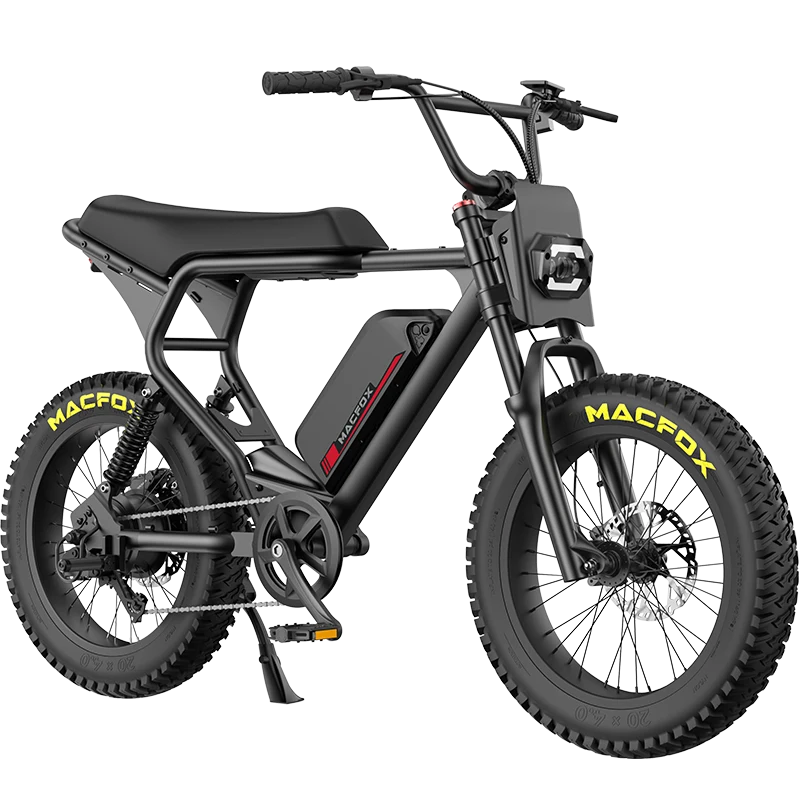Commuters today are exploring alternatives to cars, with electric bikes and gas-powered scooters/motorcycles emerging as popular two-wheeled options. Each has unique advantages and drawbacks in terms of cost, legal requirements, environmental impact, maintenance, speed, range, and urban accessibility. Below is a concise comparison, highlighting why electric bikes—particularly Macfox models like the X1S and X2—often outshine gas scooters for most U.S. city commutes.
Cost of Ownership and Operation
-
Upfront Price
-
E-bikes: $800–$3,000; Macfox X1S around $1,399.
-
Scooters: $1,000+ for entry-level; higher for larger models.
-
-
Running Costs
-
Electric Bikes: Pennies per mile (electricity), minimal maintenance.
-
Gas Scooters: Gasoline plus oil; fluctuating fuel prices.
-
-
Maintenance Expenses
-
E-bikes: Routine bike care (chain, tires, brakes); annual cost ~$50–$150.
-
Scooters: Engine oil changes, tune-ups, belts, filters; annual cost ~$200–$500+.
-
-
Insurance & Registration
-
E-bikes: Typically none required (treated as bicycles).
-
Scooters: Driver’s license or endorsement, registration fees, insurance premiums add hundreds of dollars annually.
-
Bottom Line: Over a year, e-bike commuters can save 60–80% compared to gas-powered two-wheelers.
Licensing, Registration, and Insurance
-
Electric Bikes:
-
No special license or registration in most states (must comply with e-bike class limits: up to 750W and 28 mph assist).
-
No insurance requirement, though helmets and adherence to traffic laws remain essential.
-
-
Gas Scooters/Motorcycles:
-
Require a driver’s license (often a motorcycle endorsement), DMV registration, and liability insurance.
-
Potentially mandatory safety courses or road tests.
-
Advantage: E-bikes win on convenience and cost—no DMV visits or insurance premiums.
Environmental Impact
-
E-bikes:
-
Zero tailpipe emissions; electricity use akin to a few light bulbs.
-
Quiet operation, reducing noise pollution.
-
Align with urban sustainability initiatives, cutting greenhouse gases.
-
-
Gas Scooters:
-
Burn gasoline, emitting CO₂ and pollutants.
-
Two-stroke engines (in some models) can be especially polluting.
-
Generate engine noise, contributing to urban noise levels.
-
Verdict: Electric bikes are far greener and quieter, making them ideal for eco-conscious city dwellers.
Maintenance and Reliability
-
Electric Bikes:
-
Fewer moving parts—no oil changes, spark plugs, or engine filters.
-
Self-service possible with basic bike tools.
-
Batteries last 3–5 years; replacement cost offset by fuel savings.
-
-
Gas Scooters:
-
Complex engine maintenance: oil, spark plugs, fuel system tuning, cooling fluid.
-
Heavier frames and parts may incur higher repair bills.
-
Dependence on a functioning engine—no pedaling fallback if it breaks down.
-
Conclusion: E-bikes offer simple, DIY-friendly upkeep and higher day-to-day reliability.
Speed, Power, and Range
-
Top Speed
-
E-bikes: Class 3 models assist up to 28 mph; throttle-only up to 20 mph.
-
Scooters: 50 cc models reach 30–40 mph; 125 cc+ exceed 50 mph easily.
-
-
Acceleration & Hills
-
Electric motors deliver instant torque, providing brisk starts and hill-climbing capability.
-
Gas engines plateau; small scooters may struggle on steep inclines.
-
-
Range
-
E-bikes: 20–50+ miles per charge; Macfox X1S offers 38 miles single-battery or up to 76 miles dual; X2 up to 45/90 miles dual.
-
Scooters: 75–100+ miles per tank; refueling in minutes.
-
When to Choose What:
-
For urban trips under 30 miles and speeds under 30 mph, e-bikes are sufficient and often quicker in traffic.
-
For sustained highway travel or commutes exceeding 40 miles one-way, gas scooters/motorcycles provide necessary speed and range.
Urban Access and Convenience
-
Bike Lanes & Paths: E-bikes can use bike lanes, greenways, and off-street trails—avoiding car traffic entirely.
-
Parking: E-bikes lock to standard racks or can be taken indoors; no meter fees.
-
Transit Integration: Folding/compact e-bikes can be carried onto buses/trains, offering multi-modal flexibility.
-
Traffic Navigation: Nimble in stop-and-go, able to bypass gridlock via bike-only routes.
-
Exercise Option: Pedal assist allows light exercise; throttle option for no-sweat rides.
Scooter Limitations: Must remain in vehicle lanes, compete with cars for parking, and cannot use bike-only infrastructure—often stuck in the same congestion as cars.
Spotlight: Macfox X1S & X2 for Commuters
-
Macfox X1S
-
500W (750W peak) rear-hub motor, 25 mph assist.
-
20×4″ fat tires for stability on city streets.
-
38 miles per charge (76 with dual batteries).
-
No license/insurance needed; minimal upkeep.
-
-
Macfox X2
-
750W (1000W peak) motor, up to 28 mph assist.
-
Full suspension and 26×4″ tires for mixed urban/off-road use.
-
45 miles per charge (90+ with dual batteries).
-
Quick acceleration, robust frame (300 lb capacity).
-
Both models feature bright LED lights, reliable disc brakes, thumb throttles, and easy-to-remove batteries. They combine the agility of cycling with the convenience of motorized travel—perfect for U.S. city commutes.
Conclusion
For short-to-medium urban commutes (5–20 miles each way), electric bikes provide unbeatable savings, simplicity, and environmental friendliness. They avoid licensing and insurance hassles, capitalize on bike-friendly infrastructure, and deliver sufficient speed and range for city travel. Macfox’s X1S and X2 exemplify these benefits with commuter-focused designs, long battery life, and powerful motors.
Gas scooters and motorcycles, while offering higher speeds and easier long-distance travel, carry higher running costs, more maintenance, regulatory hoops, and limited urban access. They’re best reserved for those whose commute demands sustained highway speeds or exceptionally long distances.
Ultimately, most U.S. city commuters will find commuter electric bicycles to be the smarter, greener, and more enjoyable choice—turning the daily grind into an efficient, cost-effective, and fun ride.


















